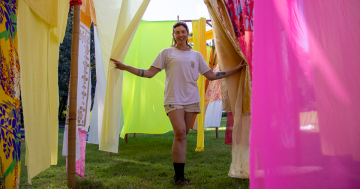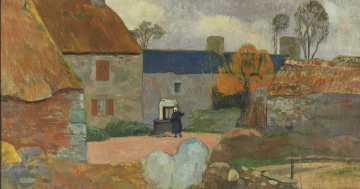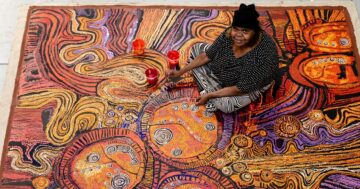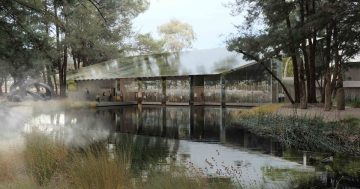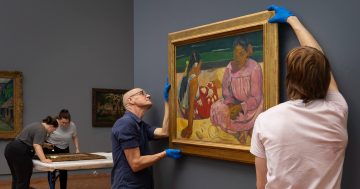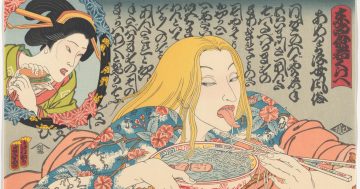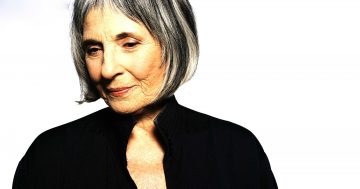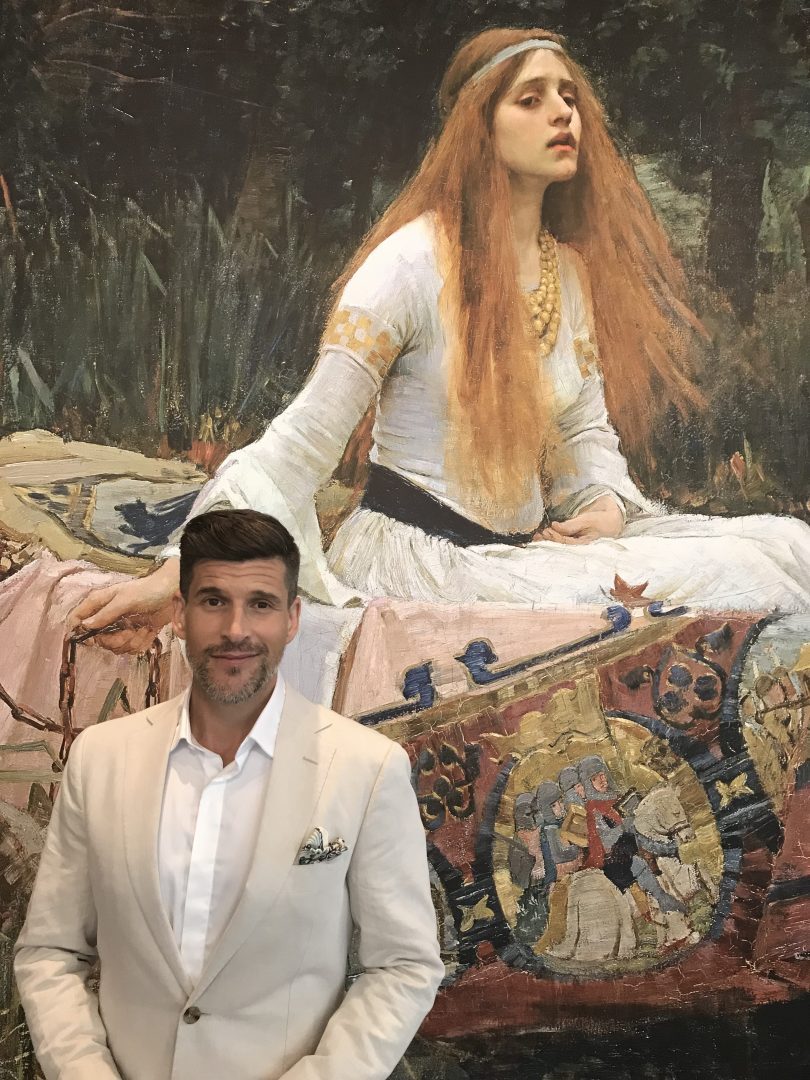
Osher Günsberg will host an al fresco picnic at the NGA in January as part of Love and Desire. Photo: G Jacobs.
Osher Günsberg has seen enough high-pitched hyper romance to recognise its allure, even when the imagery is 150 years old. Standing in front of The Lady of Shalott, a painting literally drowning in passion, death and sex at the National Gallery’s Love and Desire exhibition, the Bachelor host instantly clocks the intensity.
“The body language of the people depicted, the scenes these artists are representing are so familiar. You’ll think, ‘I know what it is to be cheated on. I know what it is to yearn for a better life, what it is to be cast out of a relationship when I don’t know how I’m going to live without it’.
“These paintings are absolutely ramped up versions of reality, and maybe that’s what it takes to give the viewer emotional connection, the kick they feel in their hearts. Walking in here I had goosebumps three times before I turned the first corner. I’m a cynical reality television guy, so if my heart can move, the regular human being will have quite an experience.”
Love and Desire is both familiar and hypnotising. The Pre-Raphaelite masterpieces, mostly from the Tate Gallery in London, have been reproduced a thousand times, but it’s a heady experience to see the real thing. Flower-spangled Ophelia drifts down the river to her death. Tennyson’s Lady of Shalott casts off in a rowboat draped with tapestries, a high Anglo-Catholic crucifix and three guttering candles.
Elsewhere are knights, crucifixion, a sorceress pouring out poison and a femme fatale surrounded by a coven of ravens. They’re intensely beautiful works, drawing on the Pre-Raphaelite determination to break free of artistic conventions with bravura painting and drawing.
It’s the first time that these works have been shown in Australia and the only time that both Millais’ Ophelia and the Lady of Shalott by John William Waterhouse have left the Tate. NGA director Nick Mitzevich says that this makes Love and Desire the most significant exhibition of 19th-century art to be seen in this country.
The Victorian era was a time of growing social uncertainty but also an era of exploration and scientific discovery. Although many of the works hark back to the Arthurian legends and religious themes, the artists broke boundaries with their lush, often erotic depictions of intense feeling.
“I am one of the many hundreds of thousands who fell in love with this period as a teenager,” says Senior Curator International Painting and Sculpture Lucina Ward. “The works have that luminosity. Modern Britain is on its way, so there’s an influence from photography, and the artists are experimenting technically, using paint differently by working on a white ground.
Ward says this was a time when gender roles were coming under increasing pressure. Victorian women would begin the first agitation for women’s rights, addressing issues like their loss of property upon marriage and a complete lack of rights over their children.
“In our desire room, the third room, there are some lovelorn maidens but when you look around you notice hardly any men. When you look more closely those women are strong and tough, doing some quite extraordinary things for the period.”
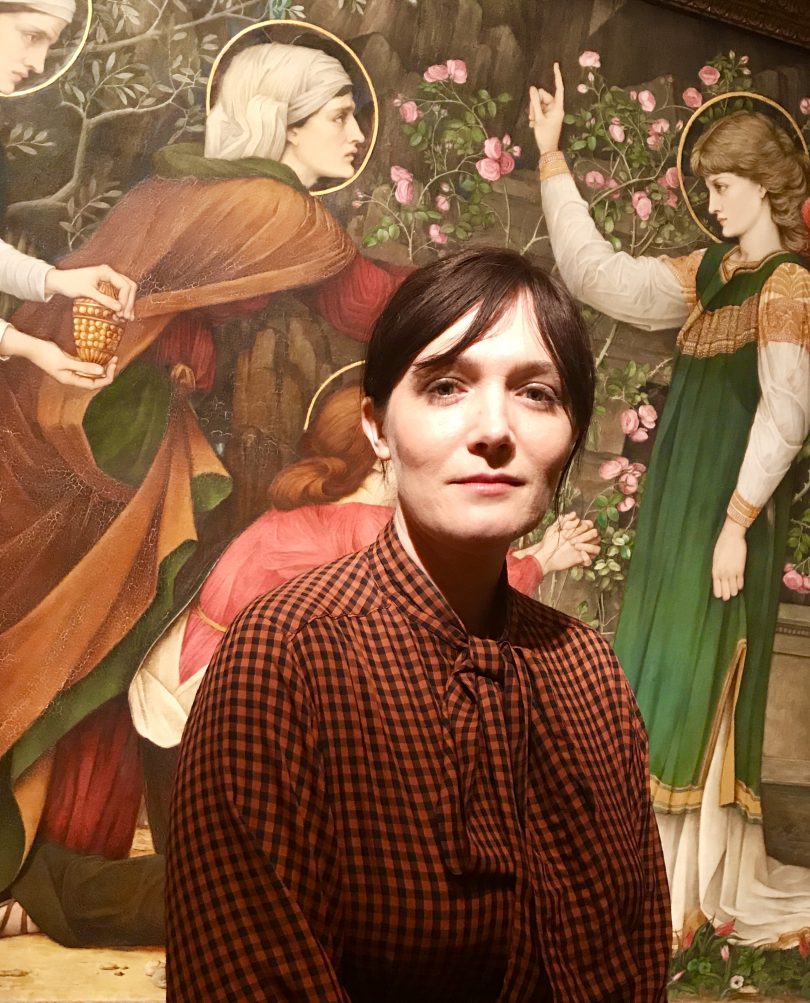
Sarah Blasko will present Songs of Love and Desire at the NGA on February 8. Photo: G Jacobs.
Singer Sarah Blasko is also part of the Love and Desire event line-up, although she sees more melancholy yearning than desire fulfilled in the paintings. “There’s a romanticism but a lot of heartbreak in these paintings, a disillusionment with love,” the singer says. “Ophelia’s love is awakened by Hamlet who then murders her father. So it’s a tragic extreme of love and confusion, she is a conflicted mess.”
But Blasko also discerns a reaction against the strictures of the era. “It’s the rebellion of wanting to make art that expresses something true, to react against learning by rote and replication, or making things that are beautiful for no real reason,” she says.
I asked Osher Günsberg, a veteran of exaggerated, intensified, condensed versions of capital “R” Romance how he thought the Instagram Netflix generation might respond to these storied works of art. “A film is a hyper-real version of real life and romance, as is a television show. You have such a limited amount of time to depict that. In a gallery, it might be only 20 seconds while someone is looking,” he says.
“So how are you going to capture that emotional reaction in your viewer? We’ll throw a dragon in. That’ll get them! With us, we put a helicopter in the shot, but they use a dragon. Even if it looks more like a crocodile.”
Love and Desire is at the National Gallery of Australia until April 28. Sarah Blasko will present Songs of Love and Desire as a one-off performance in the Gallery on February 8. Summer Lovin’ with Osher Gunsberg is an alfresco picnic on January 19. Bookings through nga.gov.au



 ) without the out on the full kicks…
) without the out on the full kicks…  Must admit though, preferred the old name.
Must admit though, preferred the old name. 








